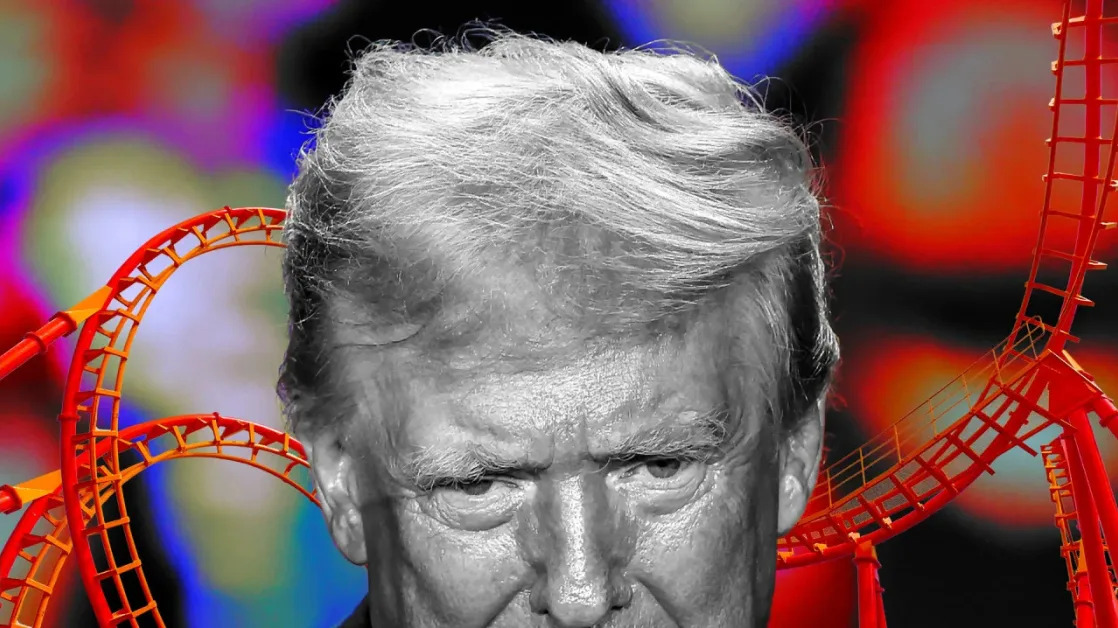(Bloomberg) -- Traders who have been piling into wagers for higher US yields ever since last week’s jobs report will see their convictions tested with the latest inflation readings.
Treasury yields remained higher on Wednesday after steadily climbing in the wake of data Friday, which revealed a healthy labor market and faster-than-expected earnings growth in January. The figures, which included upward revisions to the prior two months, support the argument for the Federal Reserve to go slow on further interest-rate cuts.
Open interest, or the amount of new positioning held by traders, increased sharply over Friday’s session and again Monday, signaling new short positions have been the dominant factor behind the weakness. Treasuries extended their drop Tuesday, propelling the benchmark US 10-year note toward 4.55% after Fed Chair Jerome Powell said central bankers “do not need to be in a hurry to adjust our policy stance,” part of prepared testimony to Senate lawmakers.
Into this mix comes Wednesday’s inflation report, which is expected to show US consumer prices excluding food and energy rose 3.1% in the 12 months ended in January. That would represent a slight cooling from the prior reading, but it would still be above above the Fed’s target range — potentially adding to the upward pressure on yields and diminishing expectations for rate cuts.
“Investors will be watching the CPI print today to see if we get any clues over the direction of the Fed going forward,” Baylee Wakefield, a multi-asset portfolio manager at Aviva Investors, said on Bloomberg Radio. “What we heard yesterday was very much in line with what we heard from Powell before, perhaps slightly more on the hawkish side. I think we got a message that the Fed is more nervous about potential upside risks to inflation over the short-term.”
Also looming are sales of some $67 billion of US 10- and 30-year debt over Wednesday and Thursday. The yield on benchmark 10-year Treasuries was little changed at 4.54% as of 12:05 p.m. in London.
Last month, a slightly softer inflation reading fueled a rally in Treasuries. Since then, though, a growing camp of investors and consumers have grown worried that President Donald Trump’s tariff policies and escalating trade tensions will stoke inflation in the months ahead. This could limit the scope of any bond comeback.
The bulk of recently established short positions have appeared in the so-called belly of the Treasuries curve, where open interest in five-year note futures has risen by a combined $2.8 million per basis point in risk over Friday’s and Monday’s sessions. The swaps market is currently pricing in just less than two quarter-point rate cuts by the Fed for the current policy cycle, with the first full easing priced by the September meeting.
The payrolls revisions “drove good addition to the short side in the belly of the curve,” Citigroup Inc. strategist David Bieber wrote in a Monday note.
In the cash market, Tuesday’s release of JPMorgan’s Treasury client survey showed a move closer to neutral in the week leading up to Feb. 10, with reductions seen in both long and short positions.
Here’s a rundown of the latest positioning indicators across the rates market:
JPMorgan Treasury Client Survey
In the week up to Feb. 10, the largest shift was seen in short positions, where a 6 percentage-point drop was seen as invested turned more neutral. Long positions also declined on the week by 1 percentage point.
Treasury Options Premium
Options hedging in Treasuries has eased back toward neutral across the futures strip, following last week’s rise in put premium in the long end of the curve. Recent flows in options have included focus on short volatility plays, with a standout trade including a $10 million straddle sale in March 10-year options, targeting a 10-year yield close to 4.45% level.
Most Active SOFR Options
Open interest rose across a number of Sep25 option strikes over the past week. One standout trade responsible for the jump in risk across three prices was the SOFR Sep25 95.875/95.625/95.375 put fly which was bought at 9 ticks on Friday. There also were decent gains in the 95.6875 options strike following recent flows including buyers of the Jun25 95.6875/97.00 call spread.
SOFR Options Heatmap
In SOFR options out to the Sep25 tenor, the most-populated strike remains at 96.00, despite some liquidation around that level seen over the past week (see most active SOFR options above). In the strike, there remains a heavy amount of Mar25 calls and Jun25 puts at that 96.00 level. The second-most populated strike is now the 95.625, following the SOFR Sep25 95.875/95.625/95.375 put fly, which traded in heavy size over the past week.
CFTC Futures Positioning
In CFTC data to Feb. 4, hedge funds continued to add to net duration short, by a total amount of around 241,000 10-year note futures equivalents. This follows a duration short build of around 251,000 10-year note futures the week before. The largest sector where shorts were added over the week was the 5-year note futures, where hedge funds added approximately $12.8m/DV01 to bearish positioning. On the flip side, asset managers saw little change in futures positioning over the week, remaining net duration long in the region of 8.7 million 10-year note futures equivalents.
--With assistance from Alice Atkins.
(Updates with latest Treasuries moves.)





